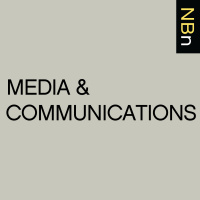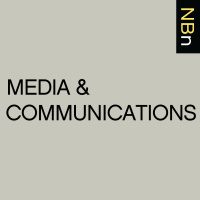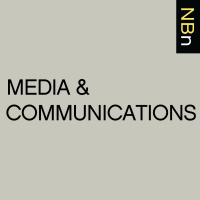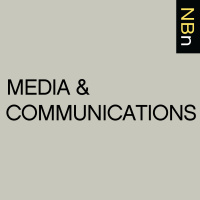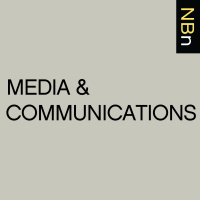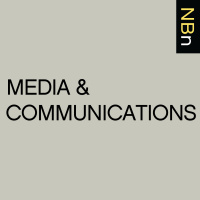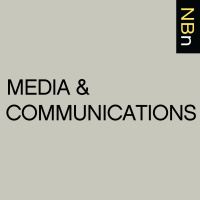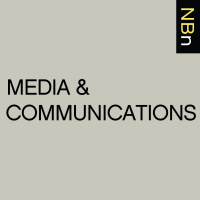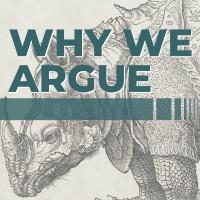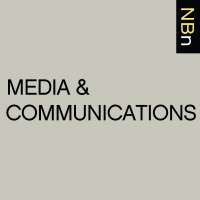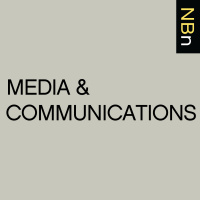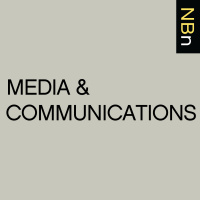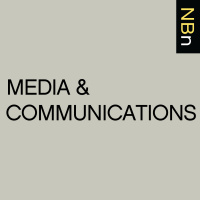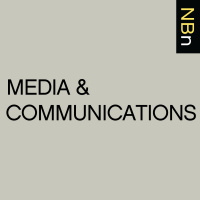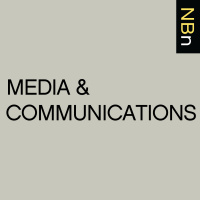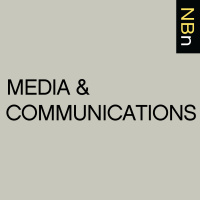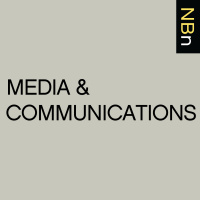Synopsis
Interviews with Scholars of Media and Communications about their New Books
Episodes
-
Zek Valkyrie, “Game Worlds Get Real: How Who We Are Online Became Who We Are Offline” (Praeger, 2017)
15/12/2017 Duration: 56minZek Valkyrie teaches at the University of Colorado in Colorado Springs. His new book, Game Worlds Get Real: How Who We Are Online Became Who We Are Offline (Praeger, 2017), takes readers into the world of electronic games and the complex social relationships that they create. With the mainstream reader in mind, it serves as a primer for anyone interested in the how and why of gaming, as well as a solid introduction to social science concepts generally. The book does not presume apologetics for video games—to be sure, the author takes a direct approach to discussing the myriad social problems inherent in the medium. Along with the many positives to collaborative and competitive online play, major topics include sexism, masculinity, various gamer stigmas, identity formation, and consumption, among others. In this conversation we touch of all of these, as well as the books origins, how the author was able to include student work in the final publication, and his award-winning teaching methods. Learn more about y
-
Brett L. Abrams, “Terry Bradshaw: From Super Bowl Champion to Television Personality” (Rowman and Littlefield, 2017)
15/12/2017 Duration: 47minToday we are joined by Brett L. Abrams, author of the book Terry Bradshaw: From Super Bowl Champion to Television Personality (Rowman & Littlefield, 2017). It is part of a series called Sports Icons and Issues in Popular Culture. Abrams, an archivist of electronic records in Washington. D.C., does more than just document the football career of Hall of Fame quarterback Terry Bradshaw, who won four Super Bowl titles during the 1970s with the Pittsburgh Steelers. Abrams goes beyond the nuts and bolts of a successful athletic career and explores Bradshaw’s foray into country and gospel singing, his acting in movies, his adventure as a part owner of a NASCAR team, and finally, his long and successful run as a NFL color commentator and later a studio analyst first for CBS, and then for Fox. Maligned during his playing career for a perceived lack of intelligence—a prejudicial view of Southerners mostly held by people north of the Mason-Dixon line, Bradshaw played off his L’il Abner, good o’l boy image to craft his o
-
Rebecca Tuhus-Dubrow, “Personal Stereo” (Bloomsbury Academic, 2017)
12/12/2017 Duration: 35minRebecca Tuhus-Dubrow‘s book, Personal Stereo (Bloomsbury Academic, 2017) , which is part of the Object Lessons series, offers a compelling and expertly researched study of the Sony Walkman, taking into account the device’s controversial origin story, the seismic cultural impact on society in the 1980s, the worries of diminishing social interactions, and the philosophical implications of listening to music within one’s own private bubble. All this is channeled through a personal nostalgic affection for the device. Rebecca Tuhus-Dubrow is a writer-in-residence at the University of California, Irvine. Her writing has appeared in Slate, The Nation, The New York Times Book Review, the Los Angeles Review of Books, and Dissent, where she is a contributing editor. She was previously a contributing writer for the Boston Globe’s Ideas section, a columnist for the urban affairs website Next City, and a Journalism and Media Fellow at the UCLA Institute of the Environment and Sustainability. Stephen Lee Naish is a wri
-
Bob Batchelor, “Stan Lee: The Man Behind Marvel” (Rowman and Littlefield, 2017)
12/12/2017 Duration: 01h11minIn his new book, Stan Lee: The Man Behind Marvel (Rowman and Littlefield, 2017), cultural historian and biographer Bob Batchelor examines the life of Marvel’s Stan Lee one of the most iconic figures in comic book history. Batchelor has written the first biography of Stan Lee. Starting with his childhood as a Depression-era New Yorker born to immigrant parents, Batchelor follows Lee’s career as a teenage editor at Marvel Comics, his stint as a playwright for the United States Army during World War II, and his unrelenting work ethic and drive that transformed the comic book industry and brought characters such as Spider Man, the Hulk, Iron Man, the Fantastic Four, the Avengers, and the X-Men to life. Batchelor explores the larger place in popular and American cultural history that Stan Lee has played over the past 70 years from comics to television to film, reflecting on the role of the superhero in the American experience. Well researched, Stan Lee: The Man Behind Marvel gives insight not only into well-known
-
Jo Littler, “Against Meritocracy: Culture, Power, and Myths of Mobility” (Routledge, 2017)
17/11/2017 Duration: 45minHow does the idea of ‘meritocracy’ serve to reinforce social inequality? In Against Meritocracy: Culture, Power and Myths of Mobility (Routledge, 2017) Dr Jo Littler, Reader in Culture and Creative Industries at City, University of London analyses the history of the term, the political project it has been associated with, and the cultural manifestations of its neo-liberal form. The book charts the early, critical and satirical, origins of the idea, mapping its co-option by right wing governments within a project of state transformation and the end of social democracy. Allied to the genealogy of the idea, and the politics of inequality to which it is attached, the book details various manifestations of meritocratic culture that serve to exclude and divide. Here there are rich case studies of inequality of class, gender and ethnicity, ranging from #Damonsplaining, through ‘mumpreneurs’ to normcore plutocrats. Ranging widely, but theoretically grounded, the book is essential reading for anyone wanting to know h
-
Jessica M. Fishman, “Death Makes the News: How the Media Censor and Display the Dead” (NYU Press, 2017)
14/11/2017 Duration: 40minIn her book, Death Makes the News: How the Media Censor and Display the Dead (NYU Press, 2017), Jessica M. Fishman examines how death is presented in the media. Researching how media outlets present images of death over the past 30 years, Fishman explores the controversial practice of picturing the dead. Fishman presents the varying ways the press selects the images they choose to use, the way they make decisions of what images they use, and why. Her research reveals that much of what we think we know about how dead bodies are, or are not, shown in the media is wrong. The tabloid press is less likely to show a dead body, media show dead foreign bodies more often than they show dead American bodies, and the exceptions to the rules the media uses to portray the dead are not often altered. Well researched, with knowledge from editors and photojournalists about the decisions made around images of death, Jessica Fishman’s work gives readers new ways to think about the ways death does, and does not, make the news.
-
Stephanie Brookes, “Politics, Media and Campaign Language: Australia’s Identity Anxiety” (Anthem Press, 2017)
12/11/2017 Duration: 19minIn her new book, Politics, Media and Campaign Language: Australia’s Identity Anxiety (Anthem Press, 2017), Stephanie Brookes, a Lecturer in Journalism at Monash University, explores the power of election campaign language to offer a window into the Australian national mood and national identity. Using a variety of political and media sources, including speeches, interviews, press conferences, and debates, Brookes investigates how campaign communication can help us understand Australia’s identity security: what kind of country Australia is and ought to be. Learn more about your ad choices. Visit megaphone.fm/adchoices
-
John Powers, “The Buddha Party: How the People’s Republic of China Works to Define and Control Tibetan Buddhism” (Oxford UP, 2016)
07/11/2017 Duration: 55minIn his recent book, The Buddha Party: How the People’s Republic of China Works to Define and Control Tibetan Buddhism (Oxford University Press, 2016), John Powers presents a comprehensive overview of propaganda employed by the People’s Republic of China related to Tibet and Tibetan Buddhism, showing not only how Han Chinese come to believe it, but also how Tibetans work to resist it. Drawing on previously untranslated material collected from both inside and outside of Tibet and China, this book outlines the narratives constructed by the PRC in an attempt to inform and control Tibetan Buddhist beliefs and practices. In addition to the well-known “patriotic re-education programs,” Powers also describes a booklet entitled Interpreting Tibetan Buddhist Doctrines, which attempts to re-frame Tibetan Buddhism in Chinese contexts for monks and nuns. The book also highlights the ways in which the PRC attempts to inform people’s views of foreign countries that are perceived as being sympathetic to the Dalai Lama and t
-
Nicholas O’Shaughnessy, “Marketing the Third Reich: Persuasion, Packaging, and Propaganda” (Routledge, 2017)
06/11/2017 Duration: 40minOne of the defining characteristics of the Nazi regime that ruled Germany from 1933 until 1945 was its attention to presentation as a means of winning support. In Marketing the Third Reich: Persuasion, Packaging and Propaganda (Routledge, 2017), Nicholas O’Shaughnessy details the centrality of political marketing to how the Nazis governed Germany, showing how vital it was to its success. As he explains, for all of the fear generated by the Gestapo and other tools of the authoritarian state, the basis of their rule was the construction of a broad consensus through domination of the media. At the center of this effort was Adolf Hitler himself, both as an architect of it and as the main figure in its imagery. As O’Shaughnessy demonstrates, the Nazi leadership created a brand that they spent enormous effort developing and protecting. Through a pioneering use of both “new” (radio, cinema, television) and “old” (newspapers, posters, oratory) media, the Nazis crafted a message that both sold their ideology to their
-
Marvin Scott, “As I Saw It: A Reporter’s Intrepid Journey” (Beaufort Books, 2017)
31/10/2017 Duration: 32minMarvin Scott’s new book, As I Saw It: A Reporter’s Intrepid Journey (Beaufort Books, 2017) tells 26 stories of memorable people and events that the veteran TV journalist gathered during a career spanning more than 50 years. Scott estimates that he’s told more than 15,000 stories and interviewed 30,000 people for print, radio and television. He describes himself as a journalist who has “tried to stick to old-fashioned reporting, just the facts, without adding my personal views.” He also writes that “at the heart of every story, big and small, is a person. It is people who make the news.” The winner of 11 Emmy Awards, Scott is currently the senior correspondent at New York’s WPIX-TV. He has written for the New York Herald Tribune as well as Parade Magazine and has worked as a radio reporter for the Mutual Broadcasting System and at such television outfits as CNN, WNEW, and WABC. In this New Books Network interview, Marvin Scott recounts some of the stories he covered including one he did on Charlie Walsh, the
-
Free Speech and Free Thinking with Seana Shiffrin
19/10/2017 Duration: 29minSeana Shiffrin is Professor of Philosophy and Pete Kameron Professor of Law and Social Justice at UCLA. She defends the “thinker theory” of freedom of speech, which holds that a central reason for upholding a moral and legal system of free speech is that such a system is necessary for free thought and reflective action. This view is articulated in her book, Speech Matters:On Lying, Morality, and the Law (Princeton 2014). The "Why We Argue" podcast is produced by the Humanities Institute at the University of Connecticut as part of the Humility and Conviction in Public Life project. Learn more about your ad choices. Visit megaphone.fm/adchoices Support our show by becoming a premium member! https://newbooksnetwork.supportingcast.fm/communications
-
Lisa M. Corrigan, “Prison Power: How Prison Influenced the Movement for Black Liberation” (U. Press of Mississippi, 2016)
16/10/2017 Duration: 32minIn the black liberation movement, imprisonment emerged as a key rhetorical, theoretical, and media resource. Imprisoned activists developed tactics and ideology to counter white supremacy. Prison Power: How Prison Influenced the Movement for Black Liberation (University Press of Mississippi, 2016) underscores how imprisonment—a site for both political and personal transformation—shaped movement leaders by influencing their political analysis and organizational strategies. Prison became the critical space for the transformation from civil rights to Black Power, especially as southern civil rights activists faced setbacks. Black Power activists produced autobiographical writings, essays, and letters about and from prison beginning with the early sit-in movements. The author conducts rhetorical analyses of these extremely popular though understudied accounts of the Black Power movement. Through prison writings, these activists deployed narrative features supporting certain tenets of Black Power, pride in blackn
-
Deborah Parker and Mark L. Parker, “Sucking Up: A Brief Consideration of Sycophancy” (U. of Virginia Press, 2017)
03/10/2017 Duration: 41minEver since Donald Trump was elected President, he’s created a non-stop torrent of news, so much so that members of the media regularly claim that he’s effectively trashed the traditional news cycle. Whether that’s true or not, it is hard to keep up with what’s going on in the White House, and each new uproar makes it difficult to remember what’s already happened. Take Trump’s first cabinet meeting, way back on June 12, 2017. Remember that? It began with Trump proclaiming, “Never has there been a president….with few exceptions…who’s passed more legislation, who’s done more things than I have.” This, despite the fact that he had yet to pass any major legislation through Congress. Then it got odder. Trump listened as members of his Cabinet took turns praising him. Mike Pence started it off, saying, “The greatest privilege of my life is to serve as vice president to the president who’s keeping his word to the American people.” Alexander Acosta, the Secretary of Labor, said, “I am privileged to be here–deeply hon
-
Clayton Childress, “Under the Cover: The Creation, Production, and Reception of a Novel” (Princeton UP, 2017)
29/09/2017 Duration: 48minHow does a book come into being? In Under the Cover: The Creation, Production, and Reception of a Novel (Princeton University Press, 2017), Clayton Childress, Assistant Professor in the Department of Sociology at The University of Toronto, accounts for the social processes behind the contemporary novel. The book uses a case study of Jarrettsville, a work of historical fiction, to explore the processes of creation, production, and reception for the book. Drawing on, but also extending and developing, field theory, the book challenges the usual perception of a lone authorial genius with a detailed sociological picture of how a novel is made. The book offers rich empirical material, from quantitative analysis of inequalities in publishing, through readers’ responses to the novel and insider knowledge from agents and editors, to ethnographic reflections on the social setting for authorial work. The book is a fascinating and accessible read for anyone interested in contemporary culture. The first chapter is avail
-
Stephen Pimpare, “Ghettos, Tramps, and Welfare Queens: Down and Out on the Silver Screen” (Oxford UP, 2017)
25/09/2017 Duration: 01h02minIn Stephen Pimpare‘s new book, Ghettos, Tramps, and Welfare Queens: Down and Out on the Silver Screen (Oxford University Press, 2017), the reader is encouraged to think about how we portray poverty and people in poverty in movies. Overall, Pimpare argues that we use the “propertied gaze” (in connection with the sociological concept of the “male gaze”) to view people who are poor or homeless via film. That is, we see them as objects, as sources of redemption, or we do not even see them at all. Pimpare’s analysis is thoughtful and deep, taking the reader through almost 300 films. He ties the portrayals of people in poverty to well-known caricatures, including the welfare queen and the villain social worker, but he also make other connections seen elsewhere in the media, including the connection between poverty and crime, and the social and physical landscape of cities and their ties to poverty. Pimpare also pays special attention to what we do not see portrayed in films, including women and children, deep back
-
Andrea L. Stanton, “This is Jerusalem Calling: State Radio in Mandate Palestine” (U of Texas Press, 2013)
14/09/2017 Duration: 01h01minDespite the recent booms in the study of the Middle East and North Africa, technology studies still remain scarce: one of the recent attempts to fill the void is Andrea L. Stanton‘s ‘This is Jerusalem Calling’: State Radio in Mandate Palestine (University of Texas Press, 2013). She weaves together different narratives to tell the story of the Palestine Broadcasting Service (PBS), launched in 1936 as an attempt by the mandate government to cater to different audiences, shaping middle class culture in the mandate territory in the process. The PBS reflected the concept of the dual commitment the British had to both the Arab and Jewish populations of the Mandate, in addition to demonstrating how the populations engaged with radio as an emerging form of media. NA Mansour is a graduate student at Princeton University’s Department of Near Eastern Studies working on the global intellectual history of the Arabic-language press. She tweets @NAMansour26 and produces another Middle-East and North Africa-related podca
-
Allison Perlman, “Public Interests: Media Advocacy and Struggles Over U.S. Television” (Rutgers UP, 2016)
11/09/2017 Duration: 53minSince its infancy, television has played an important role in shaping U.S. values and the American sense of self. Social activists recognized this power immediately and, consequently, set about trying to influence television’s portrayal of those values by securing access to and a voice in the medium. Allison Perlman‘s Public Interests: Media Advocacy and Struggles Over U.S. Television (Rutgers University Press, 2016) examines some these efforts, including those among African Americans, women, and parents among others, between the 1940s and the early 2000s. Perlman, an associate professor of film and media students and history at the University of California, Irvine, thus, shows that media law and regulation was an important site of debate and activism. Social activists recognized television’s power and that ensuring their own views, voices, and identities were represented on the screen could be influential in promoting their cause. Both conservative and liberal activists worked hard to use existing laws to sh
-
Rosemary Lucy Hill, “Gender, Metal and the Media: Women Fans and the Gendered Experience of Music” (Palgrave Macmillan 2016)
05/09/2017 Duration: 48minHow do women experience and participate in Metal? This question forms the core of Gender, Metal and the Media: Women Fans and the Gendered Experience of Music (Palgrave Macmillan 2016), the new book from Rosemary Lucy Hill, a lecturer in sociology at the University of Leeds. Hill’s book is both empirically detailed, drawing on analysis of Metal media, and theoretically rich, engaging with a range of work on music and gender. The book outlines the imagined community of Metal, thinking through the myths underpinning that community. By exploring myths of equality and authenticity, along with the problematic tropes of “warriors” and “groupies,” the analysis makes clear the gendered tensions of Metal fandom.The book concludes with some thoughts on how to build a new cultural vision for Metal, which will realize the promise of egalitarianism offered in much of the community and in the music. It will be essential reading across sociology, music, and media studies, as well as for all Metalheads too. Learn more about
-
Noel Brown, “The Children’s Film: Genre, Nation and Narrative” (Wallflower Press, 2017)
19/08/2017 Duration: 24minNoel Brown is a film and television scholar at Liverpool Hope University. His research has focused on Hollywood and British cinema (classical and contemporary), family entertainment, children’s culture and animation. His first three books were published by I.B. Tauris and include, The Hollywood Family Film: from Shirley Temple to Harry Potter, Family Films in Global Cinema: The World Beyond Disney, and British Children’s Cinema: from The Thief of Bagdad to Wallace and Gromit. Now his newest, The Children’s Film: Genre, Nation and Narrative (Wallflower Press, 2017) looks at children’s film to explore its cultural and social impact, and it shows the evolution of a beloved genre that has resonated across ages and generations. The Children’s Film is part of the Short Cuts Series published by Wallflower Press, an imprint of Columbia University Press. Information on Noel Brown’s work is available at http://lhu.academia.edu/NoelBrown. Susan Raab is president of Raab Associates, an internationally recognized agen
-
Geoff Martin and Erin Steuter, “Pop Culture Goes to War: Enlisting an Resisting Militarism in the War on Terror” (Lexington Books, 2010)
16/08/2017 Duration: 58minTwo professors from Mount Allison University in New Brunswick, Canada have published a book about how American popular culture reinforces militarism in the United States. In Pop Culture Goes to War: Enlisting and Resisting Militarism in the War on Terror (Lexington Books, 2010) Geoff Martin and Erin Steuter argue that popular songs, Hollywood movies, professional sports, TV news and even children’s toys help generate public support for the use of military force to solve political problems such as international terrorism. At the same time, they also argue that other elements of popular culture such as The Daily Show, the Colbert Report and The Simpsons, for example, actively resist militarism with pointed political comedy and satire. In this New Books Network interview, Steuter and Martin say their book was inspired in part by the ideas of the Reverend Martin Luther King Jr. who preached against the War in Vietnam. “We can no longer afford to worship the god of hate or bow before the altar of retaliation,” Ki

